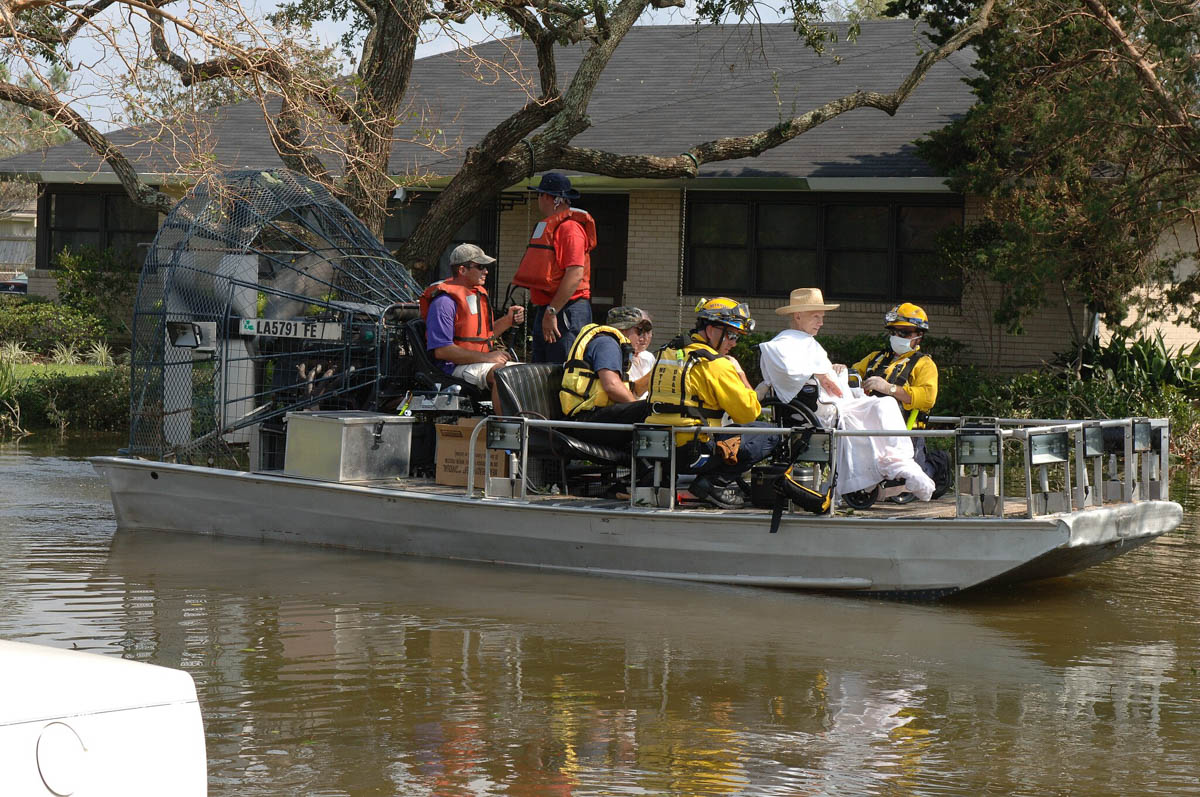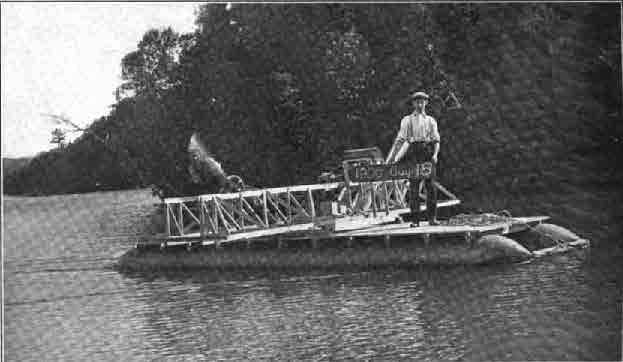Alexander Graham Bell invented the first airboat in 1905 in Nova Scotia, Canada. The British Army used airboats in the Mesopotamian Campaign during World War I, making them the first to see any kind of use. However, civilians did not commonly use airboats until the 1930s.
An airboat (also known as a planeboat, swamp boat, bayou boat, or fanboat) is a flat-bottomed watercraft powered by an aircraft or automotive engine. They’re popular for fishing, bowfishing, hunting, and ecotourism.
Airboats are commonly used in marshy and/or shallow areas where a standard inboard or outboard engine with a submerged propeller would be impractical, most notably in the Florida Everglades, but also in the Kissimmee and St. Johns rivers, the Mekong River and Delta, the Louisiana bayous, and the Mesopotamian Marshes.
The airboat’s distinctive flat-bottomed design, combined with the lack of operating parts below the waterline, allows for easy navigation through shallow swamps and marshes, canals, rivers, and lakes, and on ice and frozen lakes. Because of this, it is also ideal for flood and ice rescue operations.
The propeller propels the airboat forward, creating a rearward column of air behind it. The resulting prop wash travels at a speed of 150 miles per hour (241 kilometres per hour). Steering is accomplished by directing the column of air as it passes across the rudders, which the pilot controls with a “stick” on the operator’s left side. Water current, wind, water depth, and propeller thrust all influence overall steering and control. When compared to comparable-sized motorboats, airboats are extremely fast: commercial airboats typically sail at speeds of around 35 miles per hour (30 kn; 55 km/h), and modified airboats can reach speeds of 135 miles per hour (115 kn; 215 km/h).
Because airboats, like most boats, lack brakes, stopping and reversing direction require exceptional operator skill. Unless equipped with a reversible propeller, they are incapable of travelling in reverse. Some designs employ a clam-shell reversing device intended for short-distance braking or backing up, but these systems are uncommon.
The operator and passengers are usually seated in elevated seats that provide a view of the swamp vegetation. The operator and passengers can see floating objects, stumps and other submerged obstacles, and animals in the boat’s path thanks to the boat’s high visibility.

Since the Second World War, and possibly earlier, the Soviet Union and its successor states have used airboats and airboat-like craft. The Soviet military used some true airboats (vessels that operated entirely on water) during WWII. However, the majority of Soviet airboats are aerosleds. An aerosled is an amphibious aircraft propeller-driven vehicle that is a cross between a sled, an airboat, and a ground effect vehicle. Thousands of aerosleds were used as cargo and passenger vehicles in Siberia, where they excelled due to their ability to cope with both the icy Siberian winter and the muddy, marshy conditions of Rasputitsa season (similar to the American mud season), when raw or thawing snow made road travel impossible. Today, aerosleds are still in use.
The airboat’s forefathers were waterborne vehicles used to test aircraft engines. The Ugly Duckling, an aircraft propeller testing vehicle built in 1905 in Nova Scotia, Canada by a team led by Dr. Alexander Graham Bell, was the first airboat. Ugly Duckling was a catamaran-style boat propelled by a “aerial propeller” connected to a 2,500-pound (1,100-kg) water-cooled aircraft engine. The improvised raft-like vessel could not achieve a speed faster than 4 miles per hour (3.5 knots), though the “rapid rotation of the propeller” led Dr. Bell to believe that the vessel could have achieved a theoretical top speed of “thirty or forty miles per hour,” comparable to some modern airboats, if drag was completely eliminated.
Because of their top-heavy, unstable, and extremely shallow draft, airboats are prone to capsizing and sinking. This makes them particularly dangerous when sailing on the open sea or in rough or stormy conditions. Airboats with a “long-belt gear reduction drive unit” and an automobile engine avoid these hazards because the long belt allows the engine to be mounted inside the hull, lowering the centre of gravity and reducing the risk of capsizing. Some companies and organizations, such as Airboat West and the Los Alamos National Laboratory, have developed low-center-of-gravity airboats for use in windy or rough conditions or in rescues involving obstacles such as low-hanging power lines. Autoinflation devices, similar to car airbags or autoinflating personal life vests, can also be installed on airboats.
Between 2014 and 2017, there were 75 airboat accidents in Florida, resulting in seven deaths and 102 serious injuries. The majority of deaths (five out of seven) were drownings, and 90 percent of accident victims were not wearing life jackets, despite the fact that only 30 percent knew how to swim. Another major predictor of injury in an accident is not wearing a seat belt: 40 percent of injured victims and the only two non-drowning fatalities were flung from their seats in the crashes.
Airboats have become indispensable in recent years for flood, shallow water, and ice rescue operations. As a result, they’ve grown in popularity for public-safety applications. Airboats from across the United States rescued thousands of flood victims in New Orleans following Hurricane Katrina on August 29, 2005. In less than 36 hours, thirty airboats crewed by civilian volunteers evacuated over 1,100 patients, 4,000 medical personnel and family members from four downtown New Orleans hospitals.
Airboat rides have grown in popularity as an ecotourism activity in a variety of locations, including the Florida Everglades and the Louisiana bayou. A typical airboat tour lasts 60-90 minutes and reaches speeds of up to 60 miles per hour. Most tour operators hire experienced captains who can spot alligators and other wildlife and flora from a safe distance.







